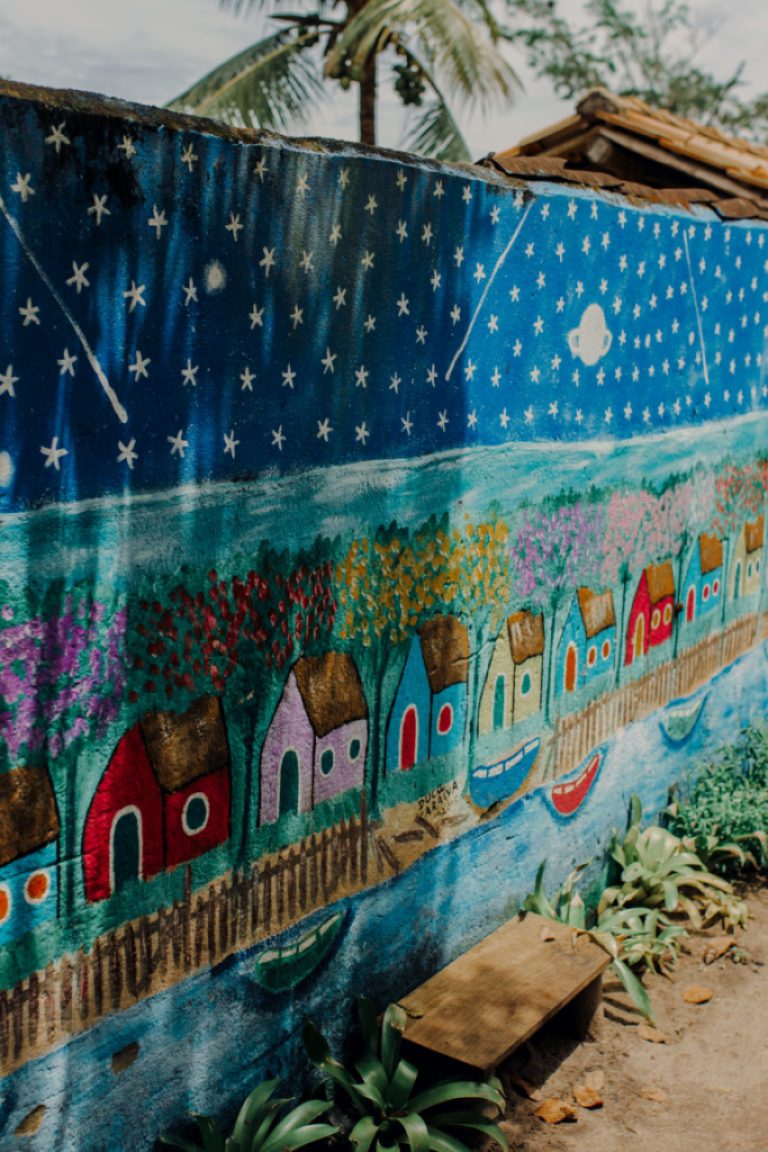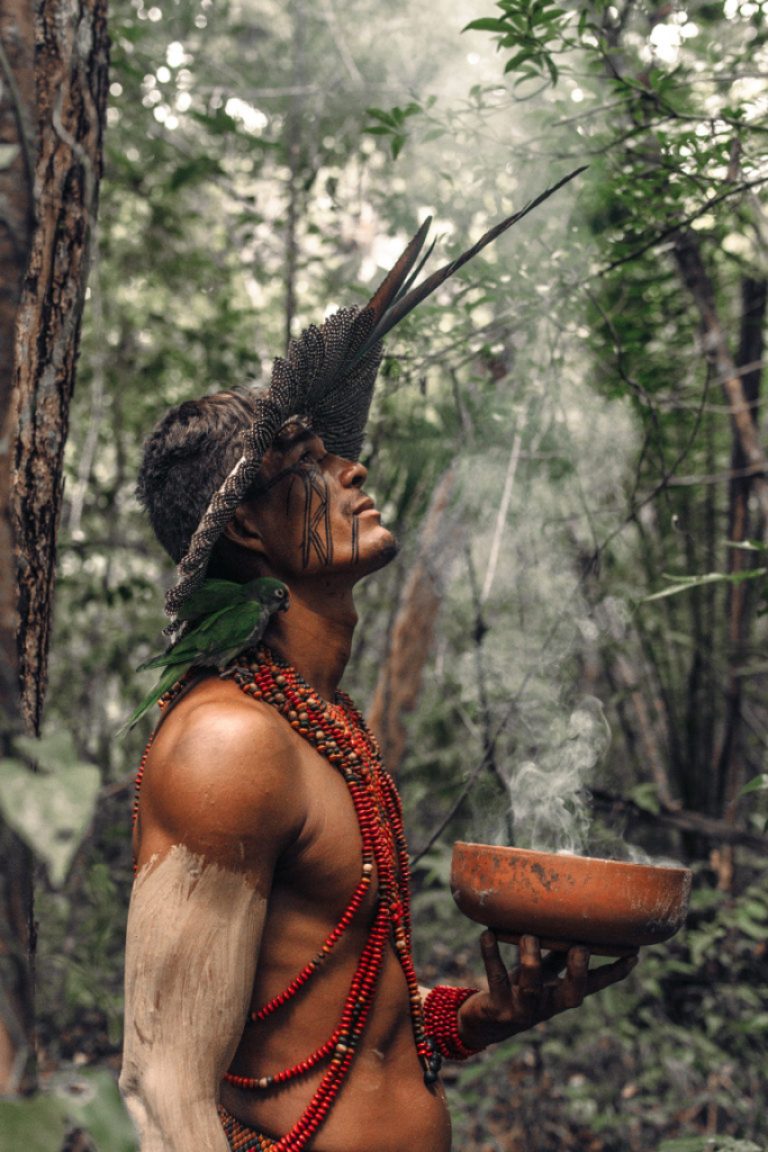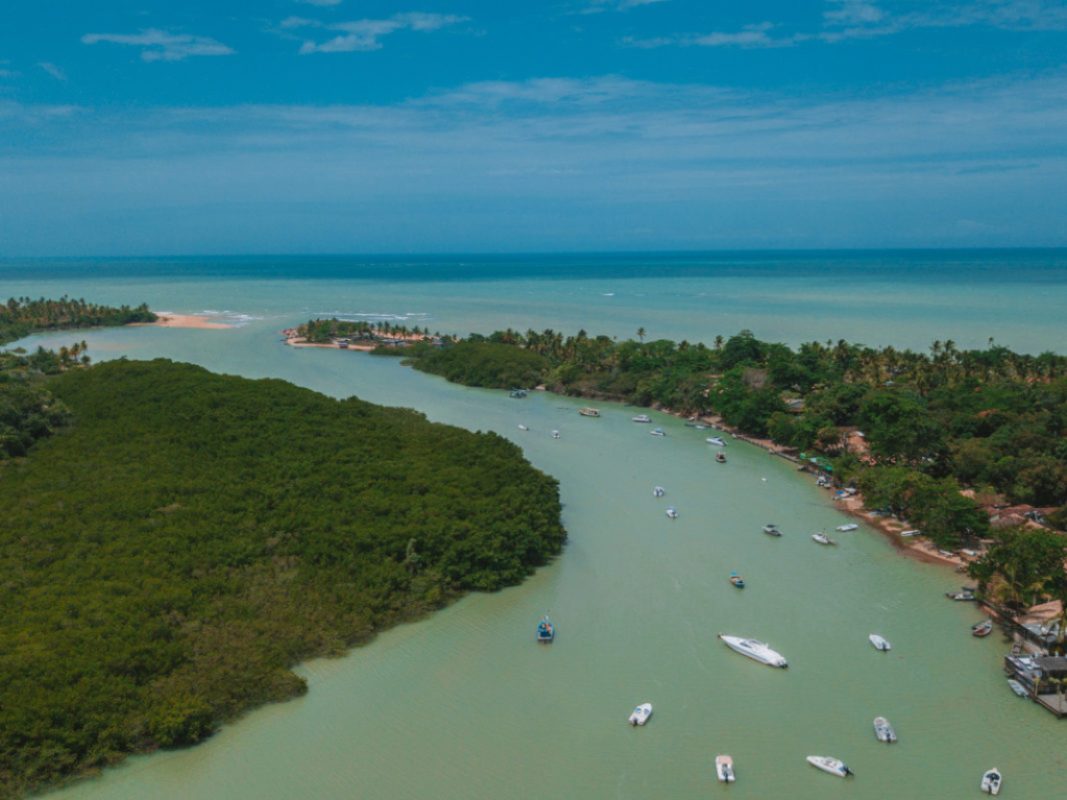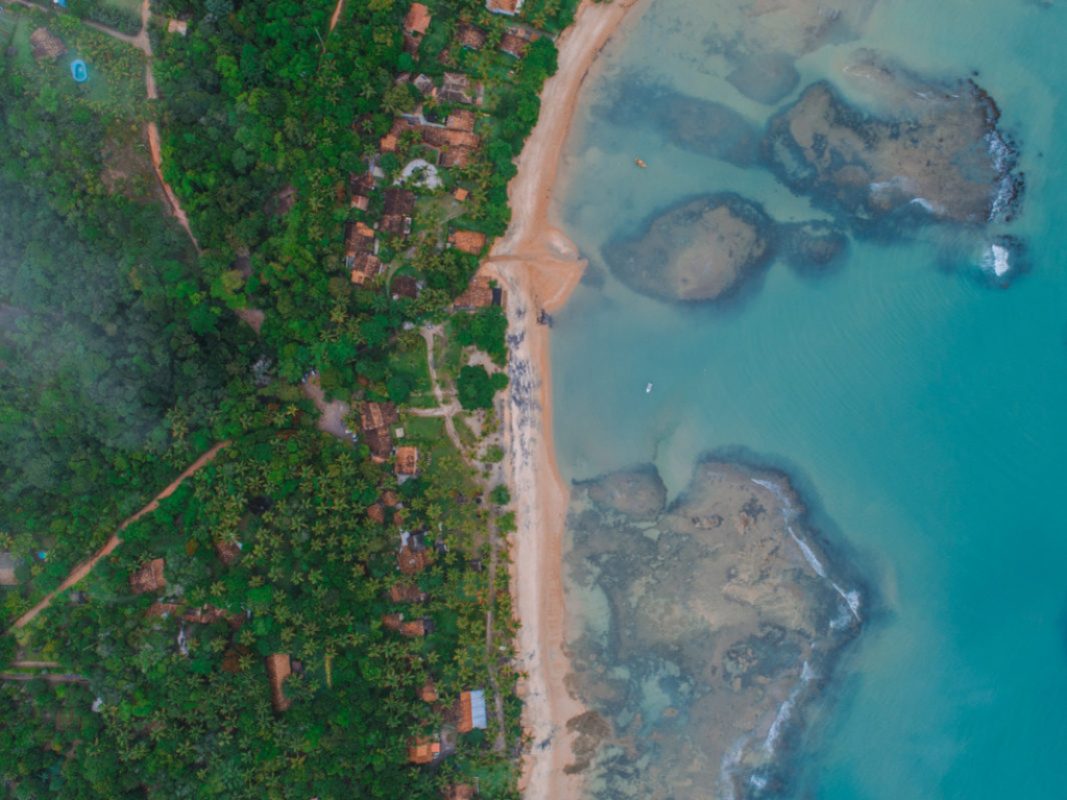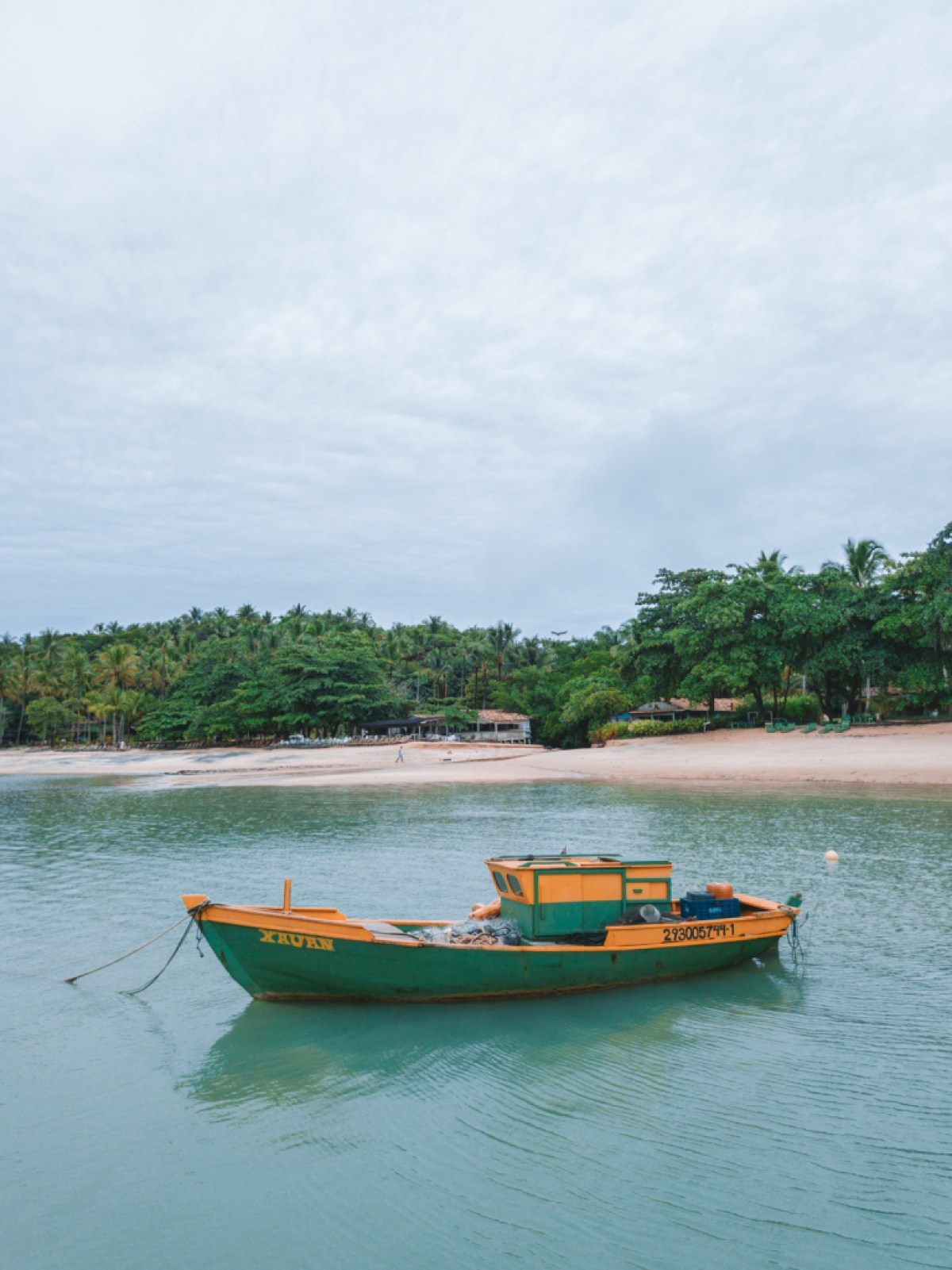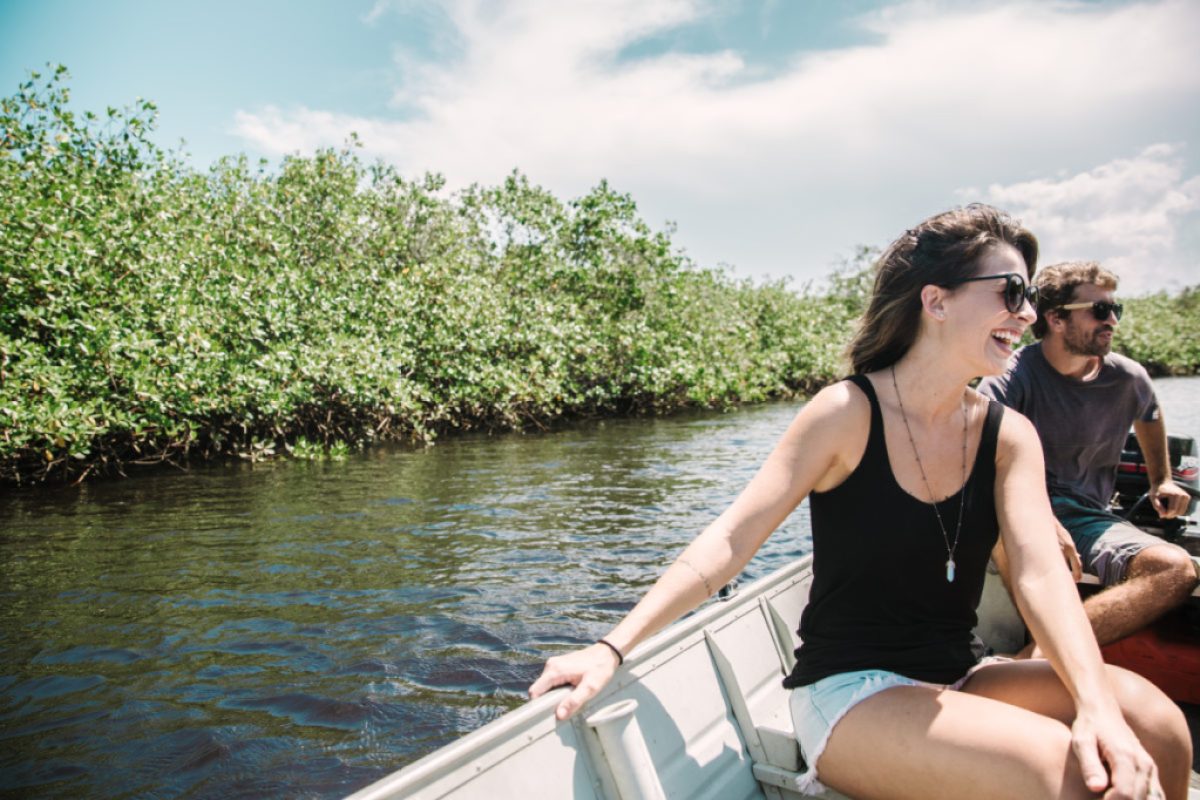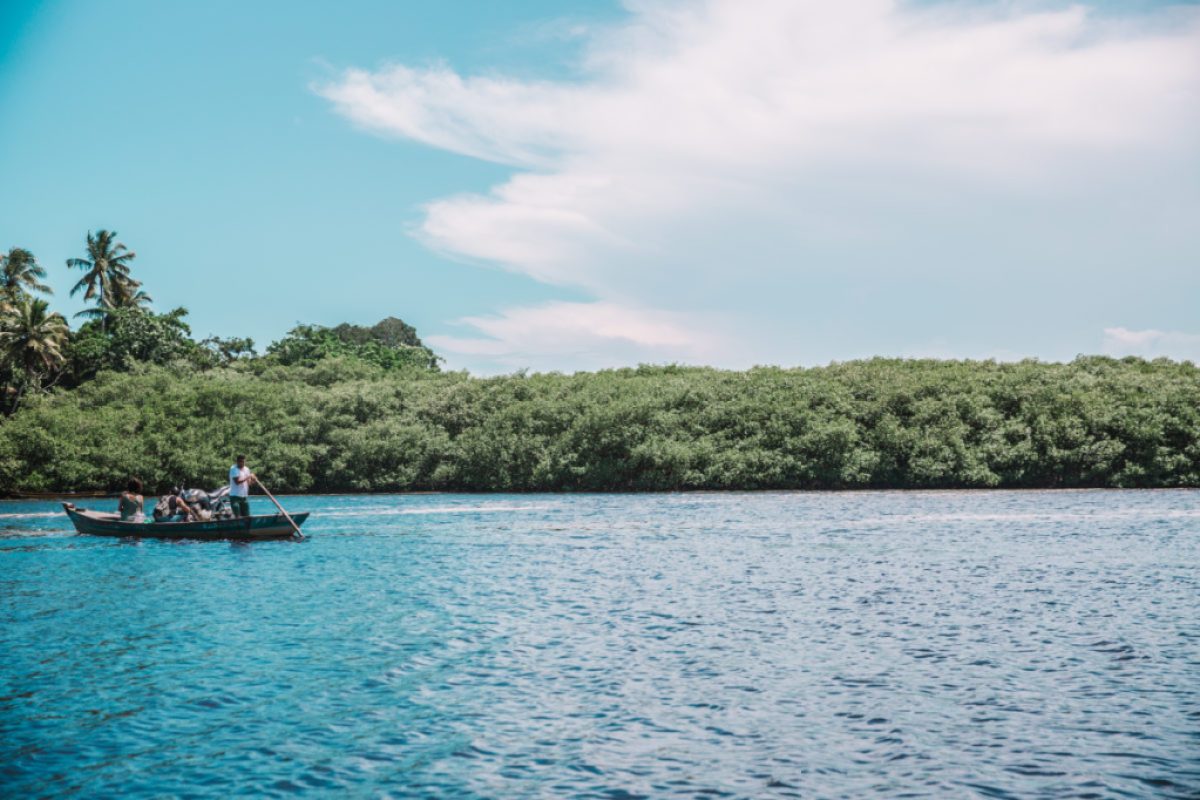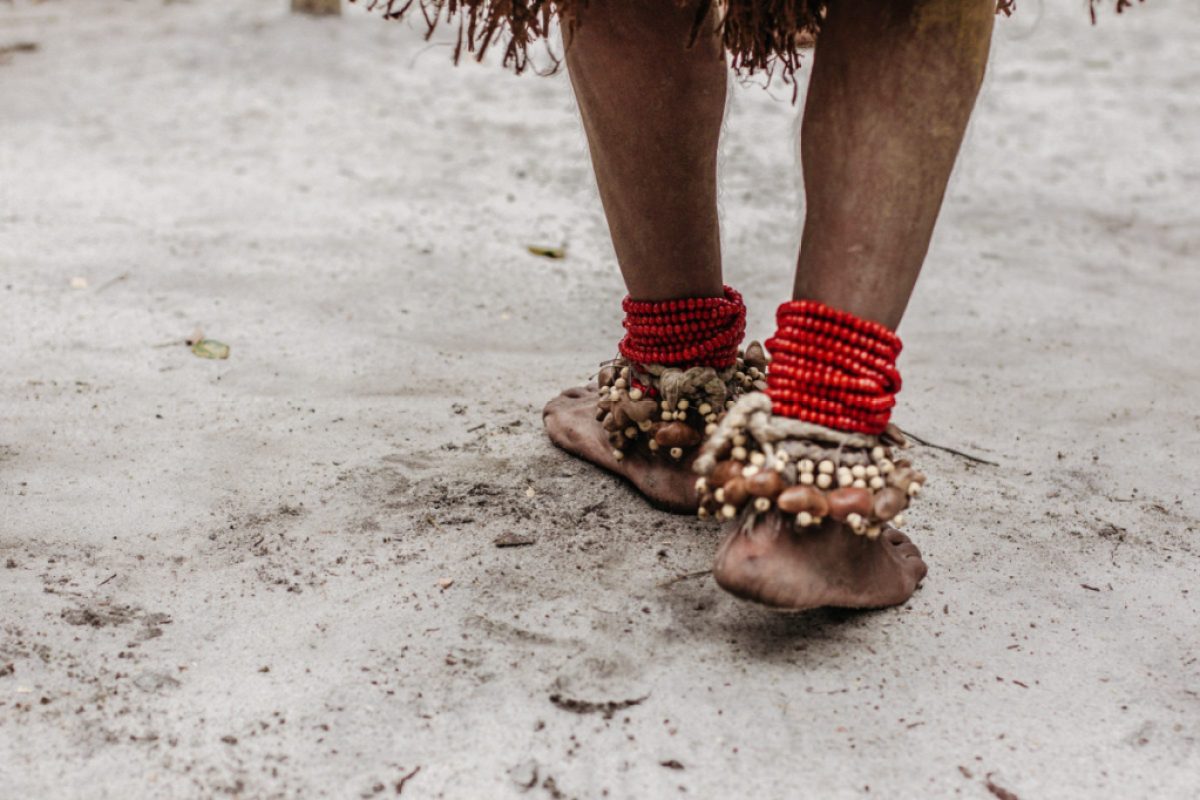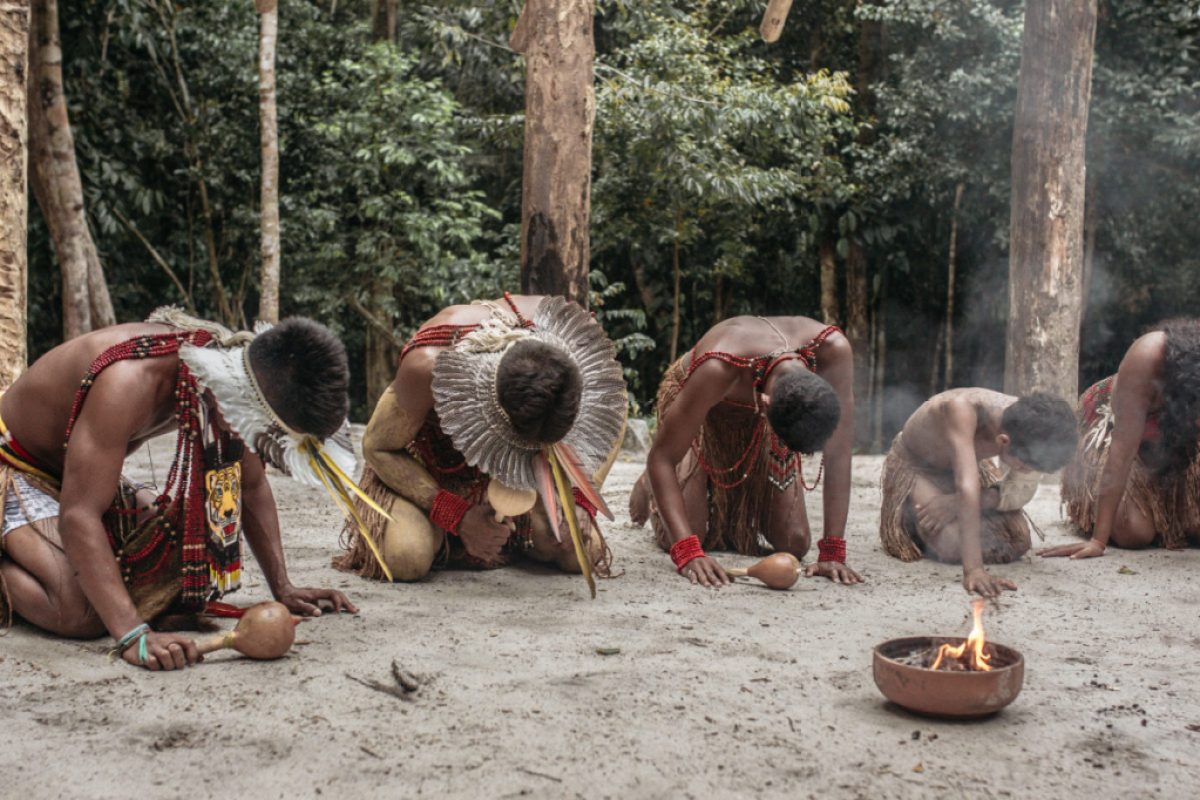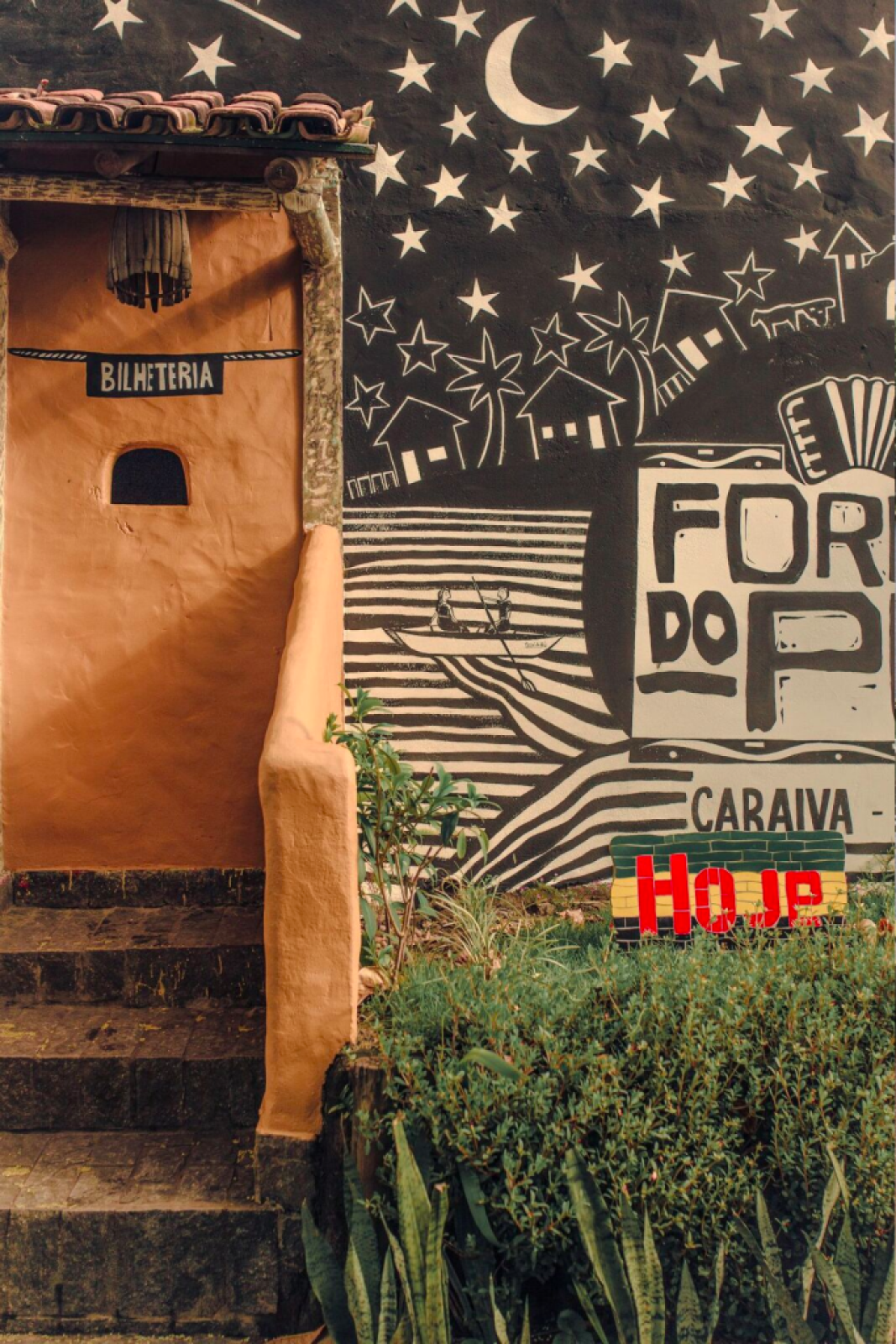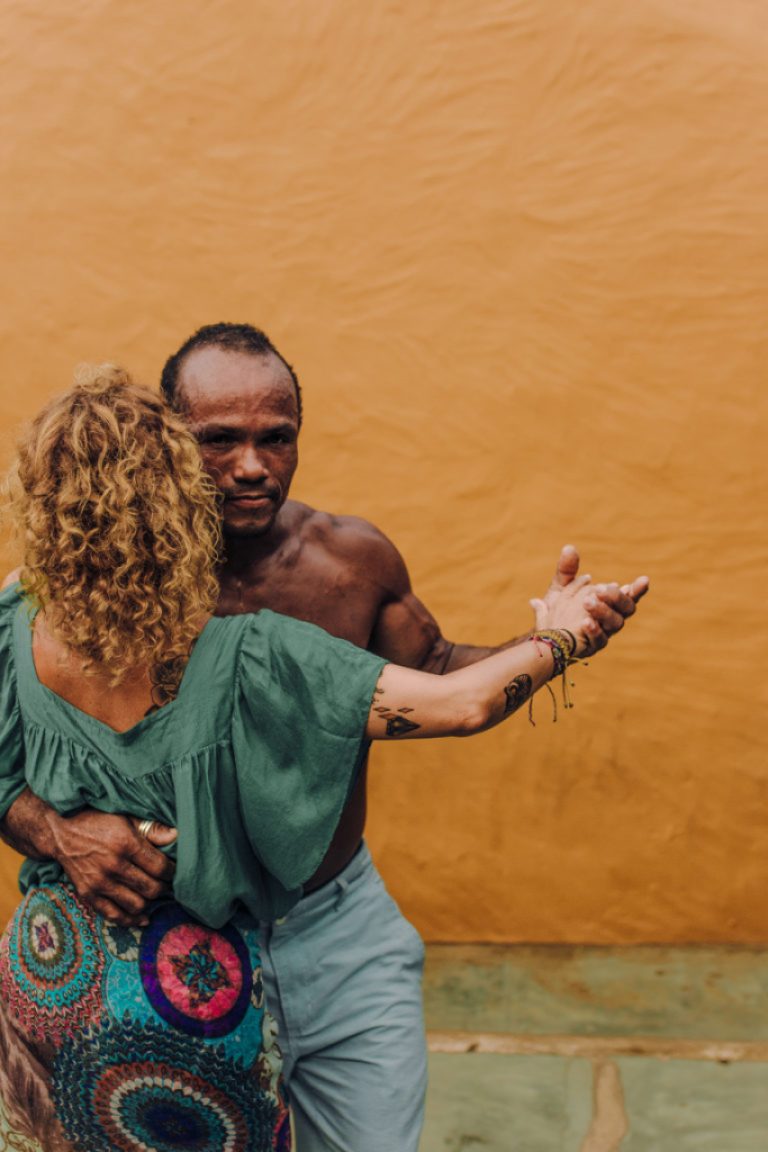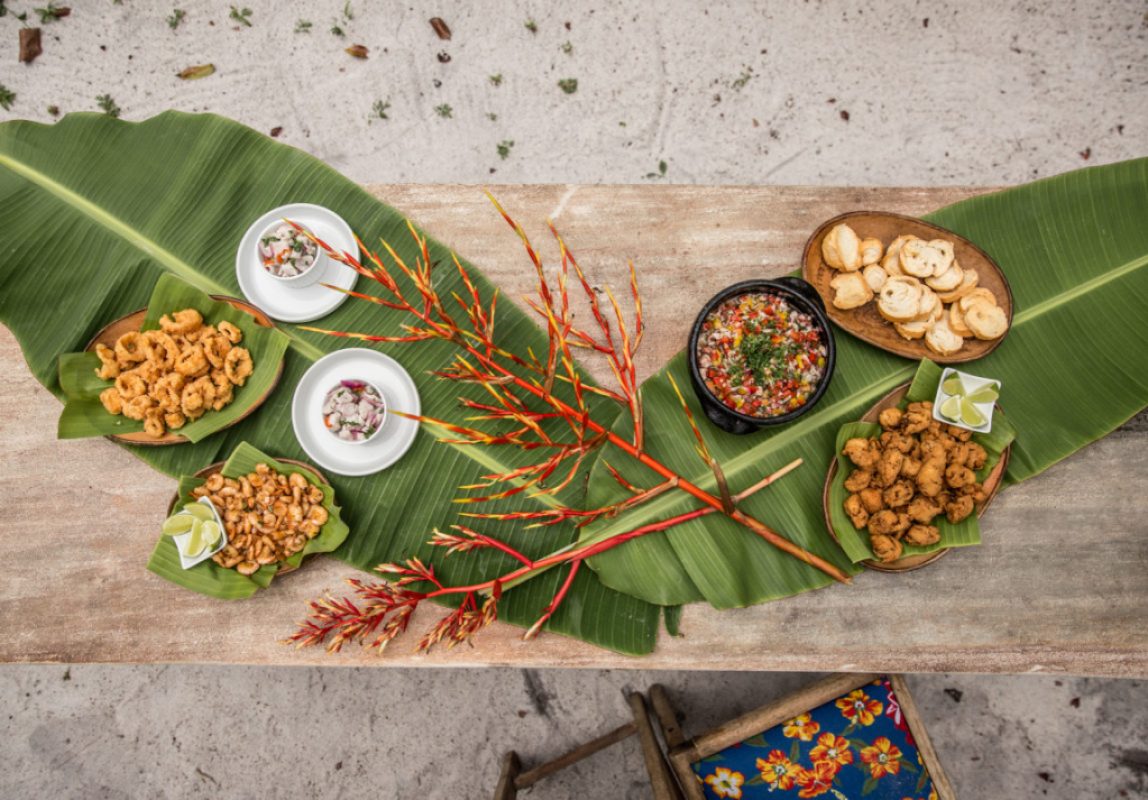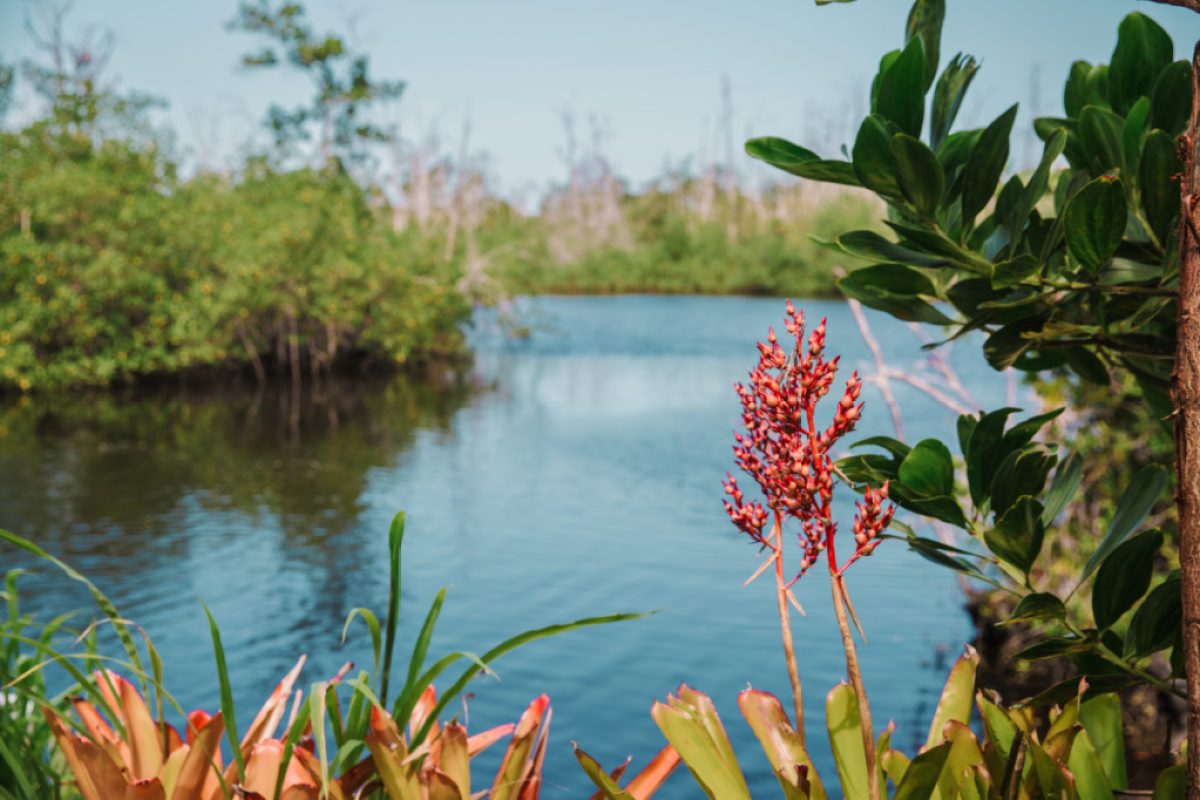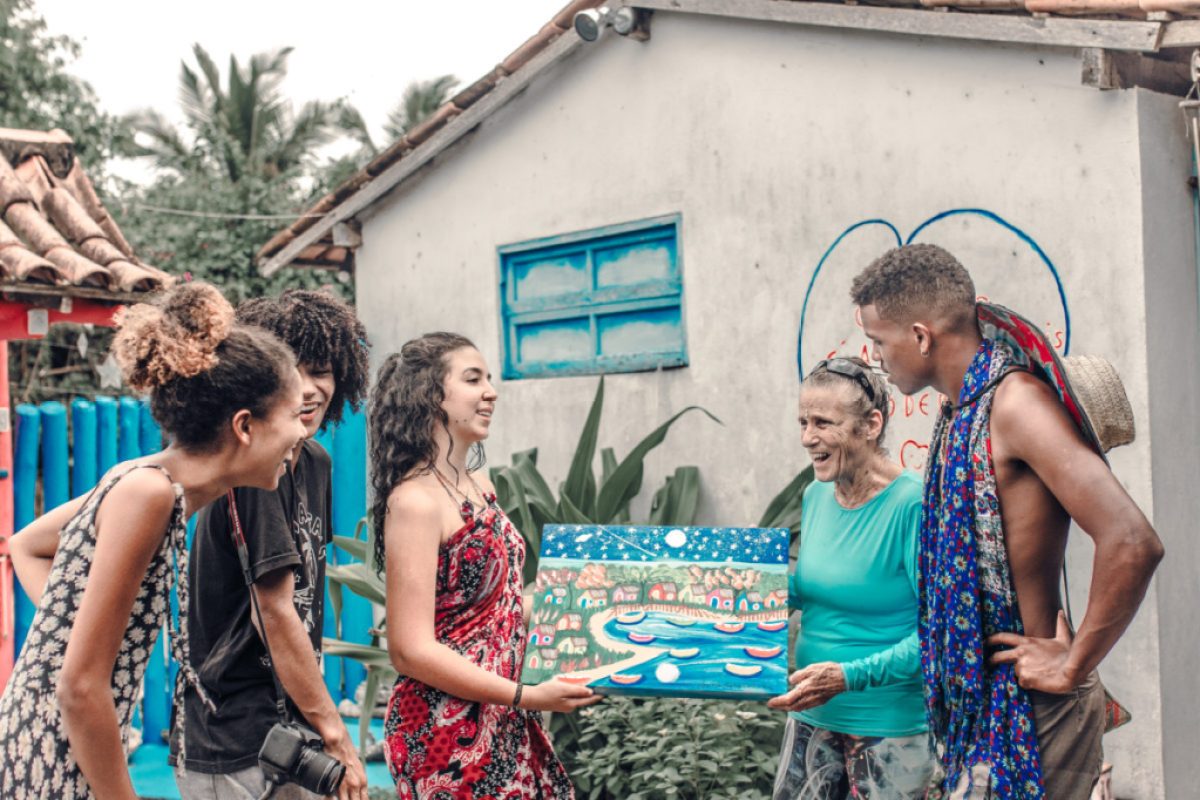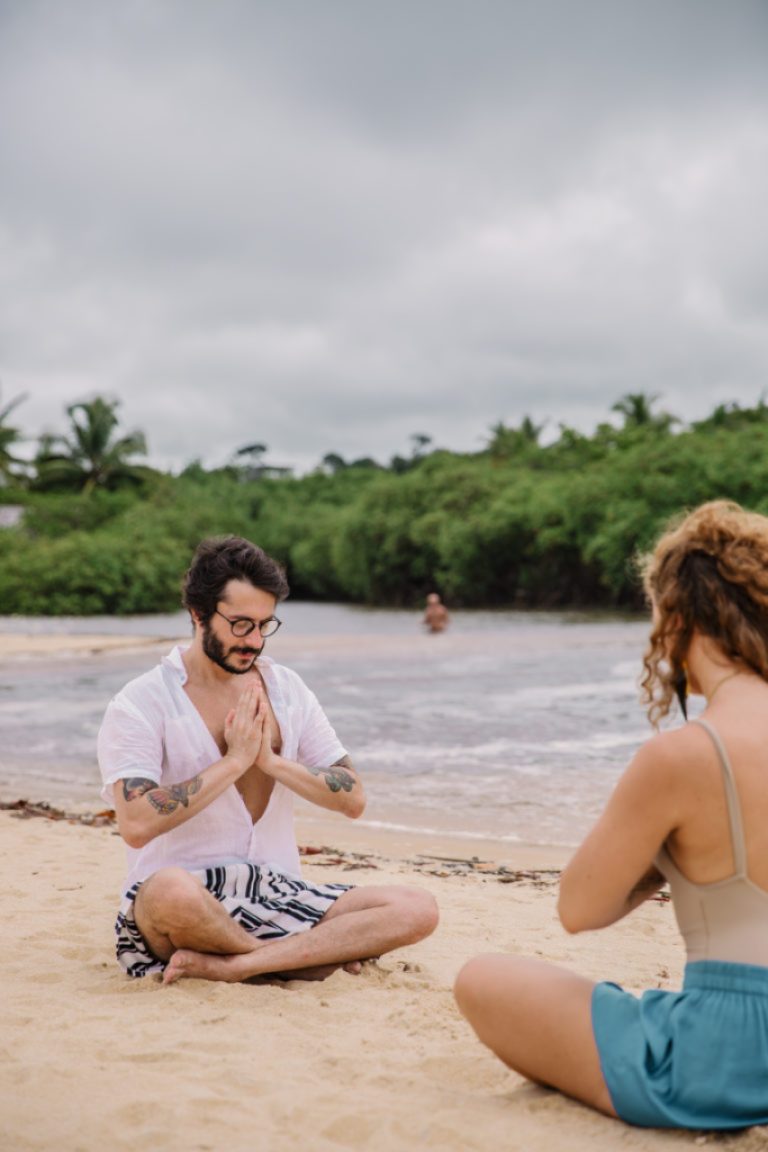Caraiva
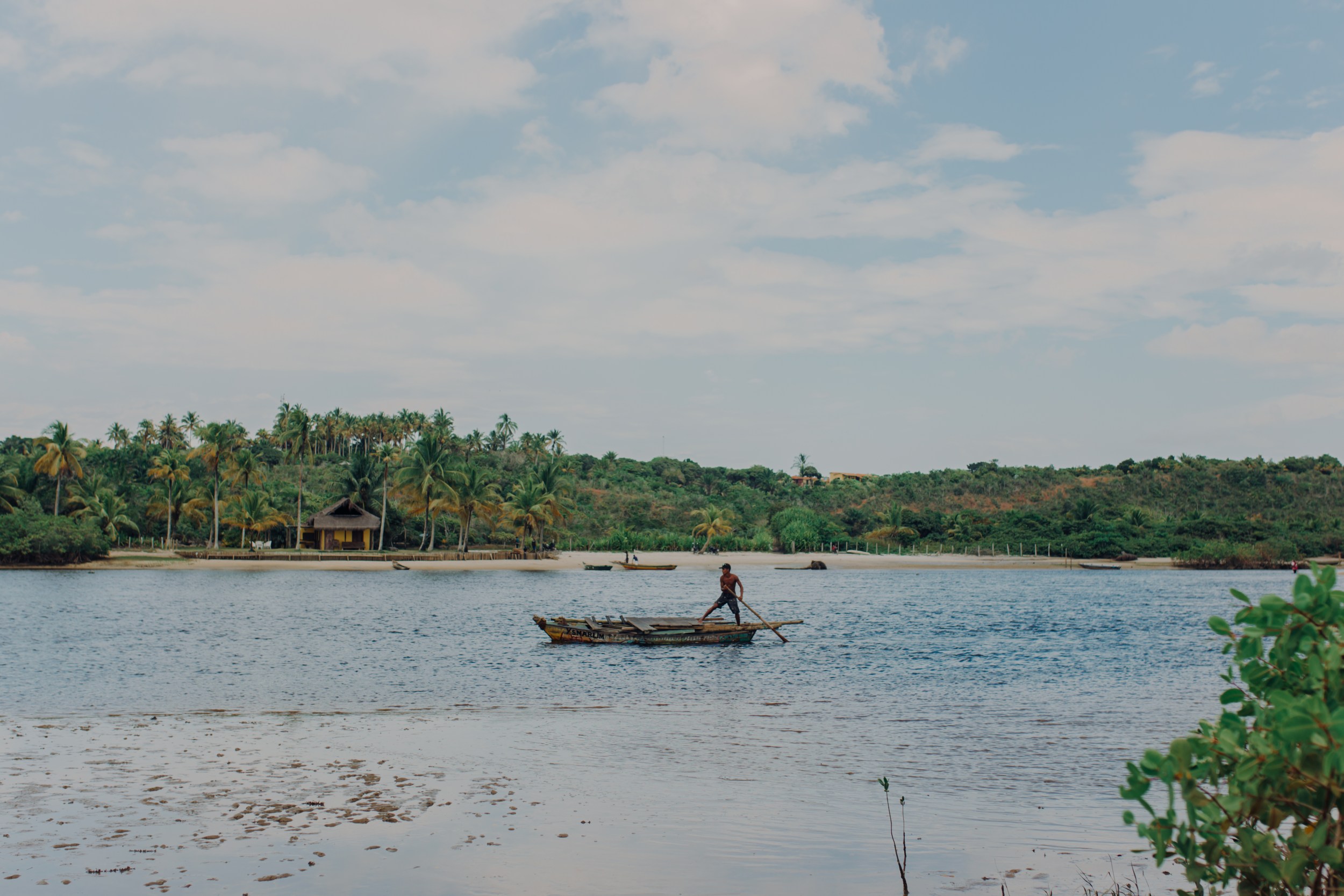
The village maintains a rustic nature and a quiet atmosphere that quickly captivates whoever is crossing by canoe to disembark there. Located on a small peninsula where the Caraiva River and the sea meet, it is shaped by extensive blocks of soft sand (there are no paved roads or dirt roads, only sand), multicolored homes and corners decorated by the paintings of Duca (an artist and also owner of a well-known vegetarian restaurant) one of the great local icons. All this along the mango, almond and jambo trees that cast stunning shadows all year round.
The lovely little shops, restaurants, bars and cafes fill up and empty out throughout the seasons, which for a long time, ended up dictating tourism trends. Caraiva is no longer like it was 10 years ago, back then it was illuminated by lamps and famous for not having powered light. Today, come hell or high water, there are visitors every day. But make no mistake: the peaceful and quiet atmosphere, the main local attraction still reigns supreme. So much so that the village continually collects stories of people who visited and decided to stay forever. Cell phone reception is restricted and cars are still banned –transportation there is old fashioned, by carriage (or even canoe).
A population of just over 1,000 people unites the residents with the Pataxó indigenous community, which directly influences local traditions, gastronomy and handicrafts. Finally, the trip takes place between the beach of dense waters, the famous sunset on the river and the vibrant (and very celebrated) forró nights.
The oldest village in Brazil
According to documentation from the National Historic and Artistic Heritage Institute (IPHAN), available at the Museum of Discovery, in Porto Seguro, the community of Caraiva is the oldest village in the country. The village, that for centuries thrived exclusively from fishing, came to captivate adventurers starting in the 1970s: the easiest way to get there was by walking from the beach of Trancoso.
During that same decade came the first boat engines, until then there were sailboats only. Since then, little Caraíva has maintained its rustic atmosphere, but over the course of time, it has been adapting to welcome more visitors. It was only in 2007 that electricity arrived in the village.
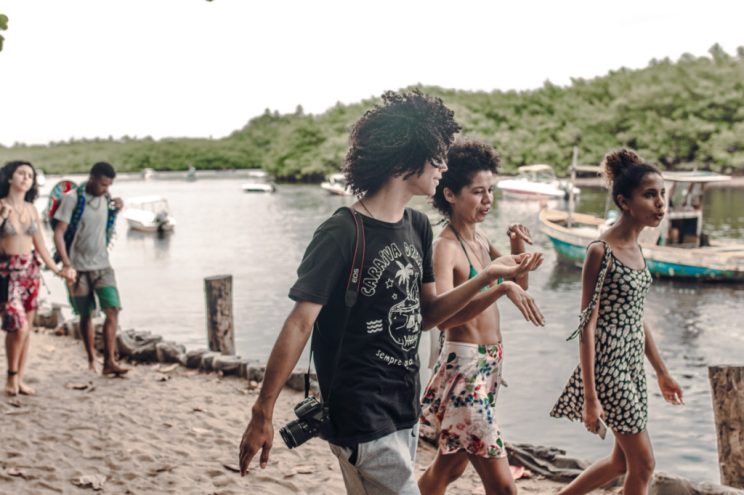
Where the river encounters the sea
The main beach, named Caraiva Beach, has about 2 km of soft sand, clear waters and green surroundings, which guarantees a quiet mood, even for those who know the traditional beach stretch. Many say this beach has the best spots for those who want to relax, spread a beach sarong on the sand and read a good book, or just to remember how slowly time can pass. In Barra Beach, or where the river meets the sea, the trees create shadows and the canoes stir the waters, which are especially thick here. Some beach tents sell food but most of them offer only quick snacks, such as tapiocas and empanadas, for those who come to spend the day.
When you cross the river on a canoe and walk for about forty minutes, you reach Satu Beach, where there are two freshwater lagoons. Soon after that you reach the cliffs and finally, the bottom of an observation deck. From above, the look is even more impressive. According to residents, Satu was a local gentleman who “had good stories and a lot of joy in welcoming tourists”.
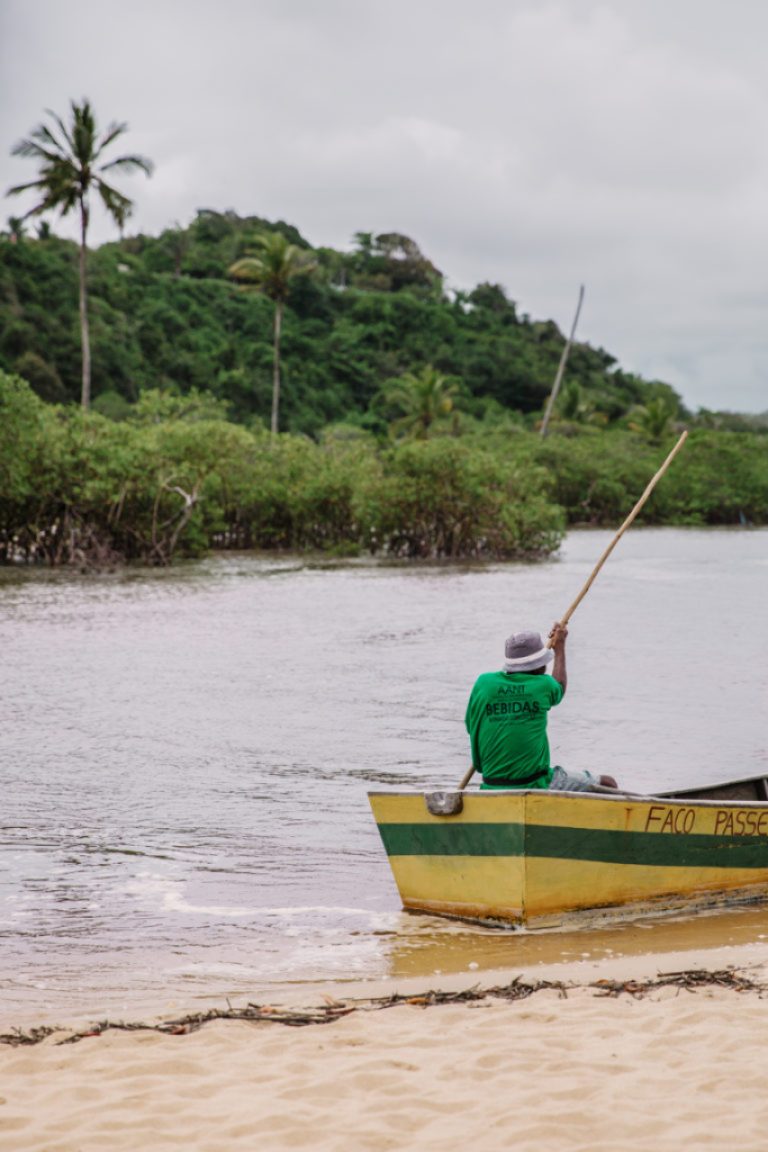
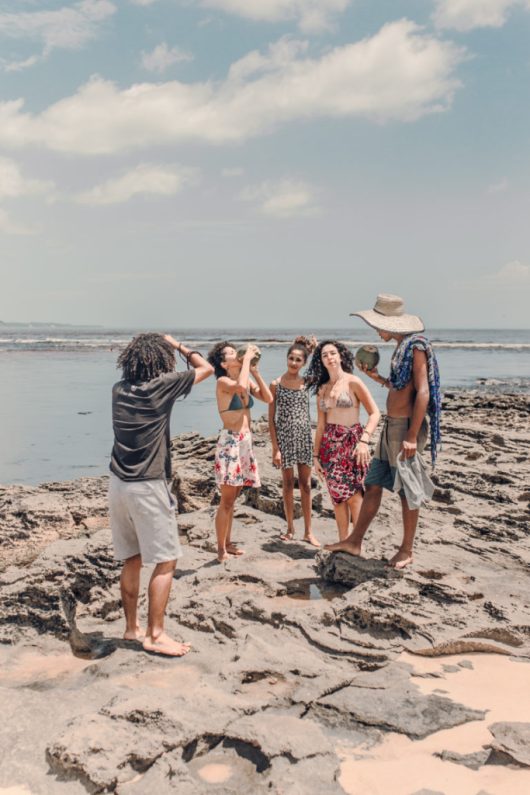
Satu Beach also serves as a strategic support point for the 9 km walk to Espelho Beach, which, as well as the neighboring communities of Trancoso and Arraial, can be accessed directly from Caraiva.
In a buggy, boat or even on foot, one can venture further south, or right up to Ponta do Corumbau, about 13 km away, where low tide turns into a translucent natural pool. Once there, watch for the formation of a “point” of sand, just like the name of the beach – but you have to go over there to understand what it is like to walk (literally) into the sea.
If your also appreciate a good freshwater dip then you are in the right place: one of the most sought after tours of the village is the riverboat on the Caraiva River, where you go down the river gradually and without breaking a sweat. Just observing nature with all the serenity it deserves: from the river to the sea, from the woodlands to the mangroves.
Lastly, on the way to Trancoso one finds charming Itaporanga, a small village with amazing handicrafts and several shops selling kitchen utensils and decoration items. An excellent stop for anyone who wants a good shopping experience before returning home.
Pataxó Culture
To learn more about the Pataxó indigenous community take a walk through the villages of Porto do Boi or Barra Velha. The latter, also known as the “Mother Village”, houses about 700 families that inhabit 8,000 hectares out of the more than 22,000 hectares of land in the famous Monte Pascoal National Park, located at the foot of Caraiva. Pataxó crafts are not only an important source of income for the Indians, but also an iconic representation of their culture. They are headdresses, headbands, necklaces, bracelets, anklets, bowls, spoons and other objects made with feathers of birds, wood, fibers and seeds. “Paraju”, a dark red wood, is used especially for domestic utensils, while most of the ornaments are made with rosewood, “jacanaíba” and “maçaranduba” seeds. To the Indians, the use of organic materials nourishes and strengthens the connection with nature.
Caraiva dances forró
If during the day the village is quiet, at night it is a spectacle in itself: the “arrasta-pé” (meaning something like “dragging feet”), dictates the mood of the night with an intense programming led by venues that are dedicated almost entirely to forró pé-de-serra, a regional rhythm. Whether through mechanical sound or a live band, the character of the accordion player is always present: if not the body, then the soul. Caraiva belongs to forró, and forró is, in fact, one of its cultural heritages.
Before surrendering to the night make a stop at Beco da Lua, a charming spot that includes regional food kiosks and good drink menus.

How to get there
– Caraiva is 120 km (or two hours) from Porto Seguro airport. The last 40 km are of dirt road. Those who come by car must leave it in a parking lot “on that side of the river”, where are all the canoes that cross over to the village. The same route can also be made by taxi;
– From the airport or even from Trancoso it is possible to make the trip using private transfers;
– Another option is to take a taxi from Porto Seguro to the Arraial ferry, and after crossing it, take one of the daily buses to Caraíva, stopping at Trancoso on the way.
